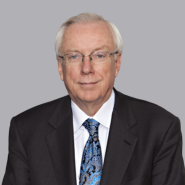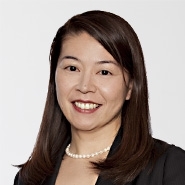Commercial Success of Claimed Product over Non-Infringing Competitive Products as Evidence of Non-Obviousness
- June 17, 2019
- Article
Associated Practices
Associated Technologies
During litigation or contested proceeding the patentee can point to commercial success of a product as evidence of non-obviousness of the claimed product. Although some work is necessary to show the nexus between the success in the market and the claimed invention, the evidence showing, for example, the product taking sales from competitive products could help the patentee’s case.
Pharmaceutical litigations are typically before generic competition starts, and often involve commercial success of a drug product when no generic counterparts are available on the market. Should the Court consider evidence of such commercial success? Suppose the patentee has the first patent on a drug compound followed by the second patent on a formulation including the drug compound. The formulation enjoys a big success on the market while the first patent blocks from the market the generics or other products containing the same drug compound. When there is such a “blocking patent” where “practice of a later invention would infringe the earlier patent*,” how the Court should weigh the evidence of commercial success in evaluating obviousness?
This issue involving blocking patents is discussed in Acorda Therapeutics, Inc., v. Roxane Laboratories, Inc. The patentee Acorda stated in its petition for a writ of certiorari, “[t]he Federal Circuit has manufactured a rigid, legally flawed doctrine,” and “applied, and expanded, its so-called “blocking patent” doctrine to invalidate for obviousness Acorda’s patents for Ampyra®.” In opposition generic makers filed their brief on June 7, 2019, stating “[t]he Federal Circuit recognized that the significance of blocking patents is a fact-specific inquiry and simply found no clear error in this district court’s factual findings and ultimate determination that respondents’ strong evidence that Acorda’s patent claims were obvious as a technical matter clearly outweighed Acorda’s relatively weak evidence regarding secondary considerations.”
As discussed in the briefs courts should properly weigh the evidence of commercial success as well as other evidence. Since secondary considerations including commercial success heavily depend on specific facts, patentees should be focused on making the case at the district court level. When applicable, the patentee can show evidence of commercial success over non-infringing competitive products in support of non-obviousness. The claimed drug product may have gained substantial market shares over a competing product containing a different but effective active ingredient. Then the blocking patent doctrine does not apply because the patent directed to the active ingredient does not block the competing product. Also, in the case of reformulated drug products including the same active ingredient as the original drug product, the comparison is against the patentee’s original drug product, and the evidence of increased commercial success of the reformulated product can support non-obviousness. In either case the important thing is, as noted above, to show nexus between the success and the claimed invention. The patentee must make sure that the key ingredient that resulted in commercial success is recited in the claims being asserted, and show that the commercial success is not due to other reasons such as advertisement, superior distribution, and regulatory scheme excluding competition.
* Acorda Therapeutics, Inc., v. Roxane Laboratories, Inc., 2017-2078, 2017-2134, slip op. at 46 (Fed Cir. Sept. 10, 2018).
Recent Publications
5 IP Rules to Know to Protect Your Business in the United States (article in French)
Coaching INPI Newsletter










 Counseling & Strategic Advice
Counseling & Strategic Advice IP Transactions
IP Transactions Litigation
Litigation PTAB Proceedings
PTAB Proceedings Start-Up
Start-Up Technology Transfer
Technology Transfer Trademark & Designs
Trademark & Designs U.S. Patent Procurement (Application Drafting & Prosecution)
U.S. Patent Procurement (Application Drafting & Prosecution)









